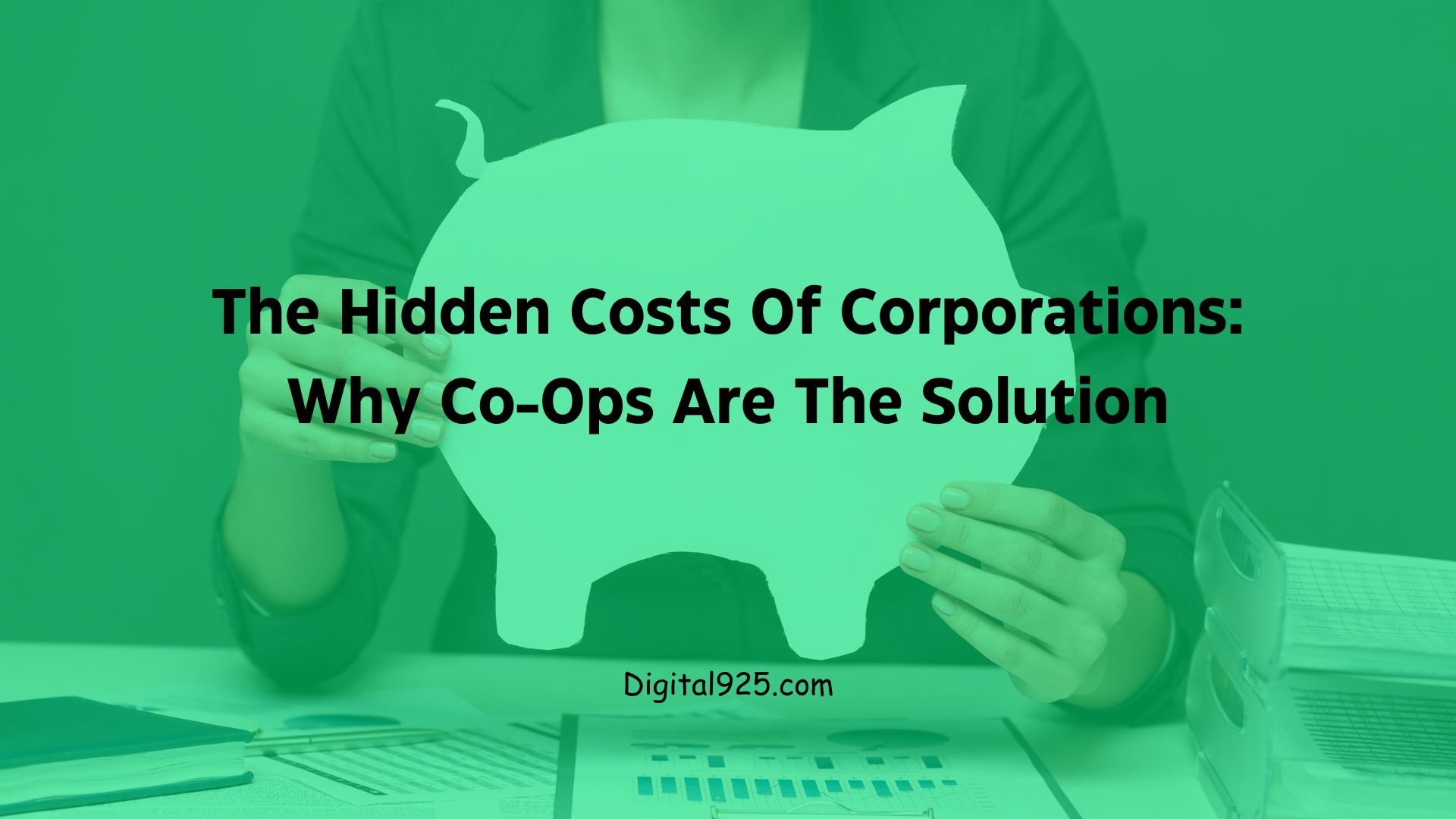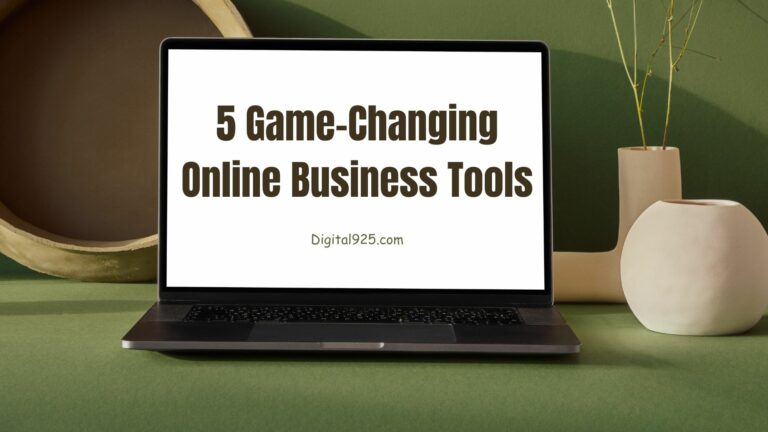The Hidden Costs Of Corporations: Why Co-Ops Are The Solution
Have you ever wondered why many of us feel like we’re treading water financially despite record corporate profits? The answer might lie in how traditional corporations operate and the hidden costs they impose on society. Let’s dive into why cooperative businesses might be the solution we’ve been looking for all along.
The Hidden Costs Of Corporations
The hidden costs of corporations are not always obvious. Behind gleaming facades and lofty business promises, significant environmental costs linger. Think pollution and the relentless depletion of natural resources, which often get brushed off as ‘necessary evils.’ But these issues impact our air, water, and planet’s health.
Socially, the picture isn’t any prettier. Income inequality and labor exploitation simmer underneath the surface. Corporations often focus on squeezing the most out of workers for the least possible pay, leading to glaring disparities in wealth and opportunity. It’s a lopsided dynamic where profits tower and the average worker struggles to make ends meet.
Economically, big corporations tend to corner markets, making it challenging for small players to compete. This monopolization isn’t just an abstract term; it affects you directly by limiting choices and driving up prices. Consumers pay more, while these behemoths rake in big profits.
For many of these entities, it’s all about the profits. People’s well-being takes a backseat, and it’s crucial to recognize how the hidden costs of corporations shape our daily lives and society at large. Staying informed and questioning the status quo can lead us toward more sustainable and equitable solutions.
Cultural Impact
When corporations dominate, communities lose more than just economic independence – they lose their unique character. The replacement of local shops with chain stores isn’t just an economic shift; it’s a cultural one that affects how we interact and what we value.
Understanding Corporate Structure
Traditional Corporate Hierarchy
Picture a pyramid – that’s your typical corporation. At the top, you’ve got a handful of executives making decisions that affect thousands below them. It’s like having a tiny group of pilots steering a massive ship without consulting the crew. This structure often leads to disconnected decision-making where those at the top might never experience the consequences of their choices.
Shareholder Primacy Model
Remember when companies used to care about all their stakeholders – workers, customers, and communities? Today’s corporations operate under a different philosophy: maximize shareholder value at all costs. This narrow focus often results in short-term thinking that can harm long-term sustainability and social good.
Executive Compensation Issues
Here’s a shocking statistic: CEO compensation has grown 940% since 1978, while typical worker compensation has risen only 12%. This isn’t just about numbers – it represents a fundamental imbalance in how we value different contributions to a company’s success.
The True Price We Pay
Environmental Impact
Let’s face it – the environment often takes a back seat when profit is the only goal. Traditional corporations might save money by cutting environmental corners, but we all end up paying through climate change, pollution, and resource depletion. It’s like taking out a loan from Mother Nature that our children must repay.
Worker Exploitation
The gig economy, unpaid overtime, and reduced benefits aren’t bugs in the corporate system; they’re features. Many corporations have mastered extracting maximum value from workers while providing minimum compensation. This creates a cycle of poverty and dependence that’s hard to break.
Local Business Effects
When a big corporation moves into town, it’s not just another business opening – it’s often the beginning of a transformation that can hollow out local economies. Small businesses, which usually have deep community roots, frequently can’t compete with corporate efficiency and scale.
Cultural Impact
When corporations dominate, communities lose more than just economic independence – they lose their unique character. The replacement of local shops with chain st
Democratic Decision-Making
Imagine working at a place where your voice matters. In cooperatives, significant decisions are made democratically, with members having a real say in the organization’s direction. This isn’t just a feel-good policy – it leads to better-informed decisions and more committed workers.
Profit-Sharing Principles
When you’re a co-op member, you’re not just an employee but an owner. This means profits don’t disappear into shareholders’ pockets but are distributed among those who created them. It’s a simple idea with powerful implications for economic equality.
Community Integration
Co-ops are more connected to their communities because community members own them. This creates a natural alignment between business success and community well-being – something that’s often missing in traditional corporate structures.
The Cooperative Advantage: What Makes Co-Ops Unique
Co-ops might be the breath of fresh air we need in business. At their core, cooperatives are all about people coming together to meet everyday needs through collective ownership. It flips the usual script, putting power back into the hands of everyday folks rather than anonymous shareholders.
What sets co-ops apart is their democratic structure. Regardless of their financial investment or position, each member gets a vote. It’s like getting a say in how things operate, making it a genuine team effort where everyone counts.
Beyond the feel-good aspect, co-ops spill enormous benefits into local communities. They often prioritize local sourcing and reinvest profits to spur economic growth close to home. This ripple effect strengthens community ties and builds resilience against broader market fluctuations.
To see real-world examples of co-ops thriving, look at sectors from agriculture to consumer goods. Take the Mondragon Corporation in Spain or your local food co-op. These examples show that co-ops aren’t just feel-good stories but viable contenders in the business arena.
By tapping into the cooperative model, businesses and communities alike can reap the rewards of a more balanced and sustainable approach to growth. It’s a powerful demonstration of how aligning business practices with communal values can benefit everyone involved.
Cooperative Model: A Better Way Forward
Democratic Decision-Making
Imagine working at a place where your voice matters. In cooperatives, significant decisions are made democratically, with members having a real say in the organization’s direction. This isn’t just a feel-good policy – it leads to better-informed decisions and more committed workers.
Profit-Sharing Principles
When you’re a co-op member, you’re not just an employee but an owner. This means profits don’t disappear into shareholders’ pockets but are distributed among those who created them. It’s a simple idea with powerful implications for economic equality.
Community Integration
Co-ops are more connected to their communities because community members own them. This creates a natural alignment between business success and community well-being – something that’s often missing in traditional corporate structures.
Success Stories in the Co-Op World
Mondragon Corporation
Spain’s Mondragon Corporation isn’t just a successful co-op – it’s proof that cooperative principles can work at scale. With over 80,000 worker-owners and billions in annual revenue, it demonstrates that you don’t need a traditional corporate structure to build a large, successful enterprise.
REI’s Cooperative Model
Member Benefits
REI shows how a consumer cooperative can thrive in retail. Their famous member dividend isn’t just a loyalty program – it’s a fundamental difference in how the company operates and who it serves.
Business Sustainability
Despite intense competition from traditional retailers, REI has maintained its cooperative structure while building a sustainable business model that benefits members, workers, and the environment.
Charting a Course for Change: Co-Ops as a Viable Future
Shifting to a cooperative model could be the game-changer in redefining business norms. The journey involves transitioning from traditional corporate frameworks to cooperative structures. While it might sound ambitious, every significant change begins with a single step.
Policies supporting and encouraging co-op growth can pave the way for a more inclusive economy. Governments and local authorities need to recognize the benefits of co-ops and provide incentives like tax breaks or grants. This support would empower communities to move towards collective ownership and shared prosperity.
The beauty of co-ops is how they integrate sustainability and equity into their operations. Focusing on the triple bottom line—people, planet, profit—co-ops can reduce environmental impacts and foster a fairer marketplace. This commitment resonates with many consumers seeking ethical and responsible business practices.
Consumers play a crucial role in this transition. Understanding the advantages of co-ops can lead to greater participation and demand for these models in various sectors. Educating yourself and others about the benefits of cooperatives supports existing co-ops and encourages forming new ones. Together, we can build a future where profit and purpose go hand in hand.
Success Stories in the Co-Op World
Mondragon Corporation
Spain’s Mondragon Corporation isn’t just a successful co-op – it’s proof that cooperative principles can work at scale. With over 80,000 worker-owners and billions in annual revenue, it demonstrates that you don’t need a traditional corporate structure to build a large, successful enterprise.
REI’s Cooperative Model
Member Benefits
REI shows how a consumer cooperative can thrive in retail. Their famous member dividend isn’t just a loyalty program – it’s a fundamental difference in how the company operates and who it serves.
Business Sustainability
Despite intense competition from traditional retailers, REI has maintained its cooperative structure while building a sustainable business model that benefits members, workers, and the environment.
Making the Transition
Steps Toward Cooperative Conversion
Converting to a cooperative isn’t simple, but it’s doable. It starts with education and building consensus, then moves through legal and financial restructuring. The key is maintaining clear communication and shared vision throughout the process.
Overcoming Challenges
Yes, cooperatives face unique challenges – accessing capital, making quick decisions, and managing growth. However, these challenges often lead to more sustainable solutions than the quick fixes favored by traditional corporations.
Future Prospects
As more people recognize the hidden costs of traditional corporate structures, interest in cooperatives is growing. New technologies are making it easier to organize and manage democratic workplaces, and younger generations seem particularly drawn to more equitable business models.
Conclusion
The hidden costs of traditional corporations are becoming increasingly visible and unsustainable. Cooperatives offer a proven alternative that can help build a more equitable and sustainable economy. While imperfect, co-ops demonstrate that we can have thriving businesses that serve all stakeholders, not just shareholders.
Frequently Asked Questions
1. **How do cooperatives raise capital without traditional shareholders?**
Cooperatives can raise capital through member investments, retained earnings, loans, and specialized cooperative financial institutions.
2. **Can cooperatives compete effectively with traditional corporations?**
Many cooperatives successfully compete in various industries by leveraging their unique member engagement and community support advantages.
3. **What’s the main difference between a corporation and a cooperative?**
The key difference lies in governance and profit distribution – cooperatives operate democratically with profits shared among members, while corporations are typically governed by shareholders, with profits primarily benefiting them.
4. **Are all cooperatives worker-owned?**
No, there are different types of cooperatives, including consumer co-ops, producer co-ops, and multi-stakeholder co-ops, each with varying ownership structures.
5. **How do salaries work in a cooperative?**







